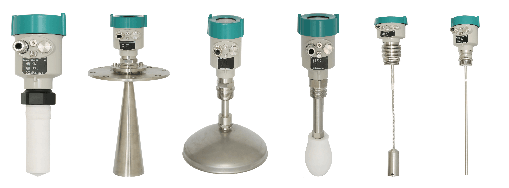How to prevent corrosion, shock and dust of radar level gauge
The radar level gauge is an indispensable monitoring equipment. On the one hand, the level gauge can maintain the smooth operation of the chemical production line, and on the other hand, it can also play a role in protecting life and property. For on-site instruments, long-term exposure to the sun and rain, the instrument is prone to failure, then we need to do a good job in the anti-corrosion, anti-vibration and dust-proof work of the instrument, strengthening the management and maintenance of the instrument can not only improve the instrument The accuracy of the instrument can also extend the service life of the instrument. Let’s follow Xiao Rui to understand how the field instrument is anticorrosive, shockproof and dustproof!

Anti-corrosion maintenance of field instruments
1. Choose materials reasonably
Targeted selection of corrosion-resistant metal or non-metallic materials to manufacture instrument parts is the fundamental method of industrial instrument corrosion prevention. For example, instrument parts made of titanium and tantalum metal have strong corrosion resistance to chlorine chemical media; instrument parts and gaskets made of polytetrafluoroethylene materials are also widely used in various corrosive media environments.
2. Add a protective layer
Making a protective layer on instrument parts or components is a very common anti-corrosion method in the industry. According to the different materials and forming principles of the protective layer, it can be divided into the following three types:
Metal protective layer. Including spraying, electroplating, hot dipping, carburizing, etc.
Non-metal protective layer. Such as paint, acid-resistant cement, rubber, plastic, enamel, etc.;
Non-metal protective film, chemical treatment is performed on the metal surface to generate protective films such as oxide film and phosphate film;
3. Use spacer
This is an effective method to prevent the corrosive medium from directly contacting the instrument. When it is impossible to choose a suitable corrosion-resistant instrument, the isolation liquid can be used to achieve the purpose of isolation. Isolation fluid is often used for pressure, flow, and liquid level measurement of corrosive media. The isolation fluid must neither dissolve the measured medium and exert a chemical effect, nor be corrosive to the measuring parts of the instrument. The density of the isolation fluid should be different with respect to the density of the measured medium and the working medium of the instrument, and its density and viscosity should not change significantly when the ambient temperature changes; it should also have good fluidity. In unexpected circumstances, when the isolation fluid is mixed into the measuring pipeline, it should not affect the use of the measured medium. For example, glycerin aqueous solution is suitable for oil, water gas, semi-water gas, C1, C2 and other hydrocarbons; ethanol is suitable for propane, butane and other media; methyl silicone oil is suitable for various gases and liquids other than moisture chlorine gas.
4. Diaphragm isolation
A corrosion-resistant diaphragm is used to isolate the isolation fluid or filling fluid from the measured medium to achieve the purpose of anti-corrosion. It is suitable for strong corrosive media, and it is difficult to use pipe isolation or container isolation. It is usually suitable for pressure measurement, and is not suitable for differential pressure measurement. The isolation diaphragm should have elasticity and impermeability, such as the commonly used diaphragm pressure gauge, single flange anticorrosive pressure transmitter, etc.
5. Blow method
This is to use blown air (or inert gas such as nitrogen) to isolate the corrosive effect of the measured medium on the measuring parts of the instrument. The air blowing method is usually used in normal pressure or low pressure liquid level measurement systems, and the blowing gas should not interact with the corrosive measured medium. According to the principle of constant pressure in the air blowing method, the liquid blowing (clean liquid such as water) method is also applied in the flow and liquid level measurement system. For example, steam condensate is blown to isolate the corrosion of the measuring parts of the instrument and eliminate the blockage of the pressure guiding tube.
Dust-proof maintenance of field instruments
The dustproof method for the outside of the instrument is to cover the instrument with a protective cover or put it in a sealed box.
For the protection of dust, impurities and particles in the measured medium, in addition to measures such as dust reduction to prevent clogging, methods such as thickening the intake tube, adding dust collectors, installing air blowing devices, and installing protective screens are usually adopted.
The coarse intake pipe is often used in combination with a dust collector and a purging device. When an orifice plate without annulus is used to measure flow, a 1.5~2m thick intake tube can be used directly at the pressure tap, and a plug can be installed to clean the hole or as a vent during maintenance. During liquid level measurement, in order to prevent crystallization in the negative pressure tube, the method of blowing steam condensate can be used for the negative pressure tube. For gas measurement with water content, a water separator can be used, which is common in pressure and flow measurement.
